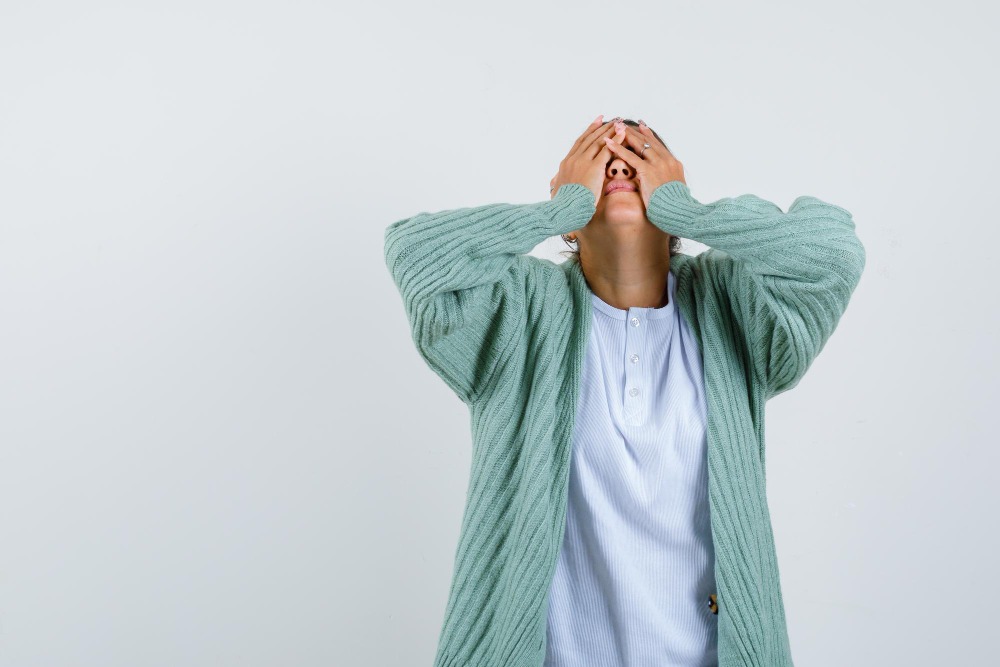What are some types of anxiety disorders?
- Generalized anxiety disorder is anxiety that feels constant or near-constant.
- A specific phobia is an intense fear of something, such as spiders or heights. For example, a person who has a phobia about germs may find it unbearable to be touched by other people.
- Panic attacks are sudden feelings of overwhelming fear when there is no real danger. Panic disorder develops when fear of another attack becomes crippling.
- Obsessive-compulsive disorder, or OCD, is a form of anxiety brought on by unwelcome, uncomfortable, and persistent thoughts that keep coming into a person’s mind. In order to control those thoughts and quell the anxiety, a person might engage in a compulsive behavior, such as hand-washing in response to thoughts about infection.
- Social anxiety disorder is disproportionate anxiety in response to social interactions, which often causes sufferers to avoid meetings or social situations.
- Post-traumatic stress disorder, or PTSD, is a form of anxiety that develops in response to a trauma, such as time spent in a war zone or being the victim of a crime.
Inquire About This Service
How common are anxiety disorders?
Anxiety disorders are the most common mental health conditions in North America. They affect about 40 million Americans. They happen to nearly 30% of adults at some point. Anxiety disorders most often begin in childhood, adolescence or early adulthood.
What are the symptoms of anxiety disorders?
“Most people know when they are feeling anxious,” Dr. Pittenger says. “It could be somatic—characterized by a pounding heart, a headache or a stomachache. Or it could manifest itself as worrying thoughts, as is the case with obsessive-compulsive disorder.”
Though everyone experiences anxiety, it can cause significant distress and can impair your ability to function in life. In that case, the anxiety qualifies as a clinical condition and should be treated professionally.
Anxiety from phobia might occur in the face of a triggering object or scenario. Panic attacks, on the other hand, often come out of nowhere.
Anixety is generally treated with a combination of medications and psychological counseling. There are several types of medications commonly used to treat anxiety disorders. It’s important to note that medication should always be prescribed and monitored by a qualified healthcare professional. Here are some of the medications commonly used to treat anxiety:
- Selective Serotonin Reuptake Inhibitors (SSRIs): These are a type of antidepressant that works by increasing the levels of serotonin in the brain. SSRIs are often prescribed for generalized anxiety disorder (GAD), panic disorder, and social anxiety disorder. Examples include sertraline (Zoloft), fluoxetine (Prozac), and escitalopram (Lexapro).
- Serotonin-Norepinephrine Reuptake Inhibitors (SNRIs): Similar to SSRIs, SNRIs increase the levels of serotonin and norepinephrine in the brain. They are also used to treat various anxiety disorders. Examples include venlafaxine (Effexor) and duloxetine (Cymbalta).
- Benzodiazepines: These medications work by enhancing the effects of a neurotransmitter called gamma-aminobutyric acid (GABA), which has a calming effect on the brain. Benzodiazepines are often prescribed for short-term relief of severe anxiety symptoms, such as panic attacks. Examples include alprazolam (Xanax), lorazepam (Ativan), and diazepam (Valium). Due to their potential for dependence and abuse, they are usually prescribed for short periods.
- Buspirone: This medication is classified as an azapirone and is used for the treatment of generalized anxiety disorder. Unlike benzodiazepines, buspirone is not habit-forming and does not cause sedation. It may take several weeks to start working.
- Beta-blockers: While not primarily used for anxiety, beta-blockers such as propranolol are sometimes prescribed to help manage physical symptoms of anxiety, such as rapid heartbeat and trembling, especially in situations like public speaking or performance anxiety.
- Tricyclic antidepressants (TCAs) and Monoamine oxidase inhibitors (MAOIs): These are older classes of antidepressants that are less commonly used for anxiety disorders due to their side effect profiles and potential for interactions with other medications and foods. However, they may still be prescribed in certain cases.
It’s important for individuals to work closely with their healthcare provider to determine the most appropriate medication and dosage for their specific needs, as well as to monitor for any potential side effects or interactions with other medications. Therapy, lifestyle changes, and other forms of support may also be recommended in conjunction with medication for the treatment of anxiety disorders.


